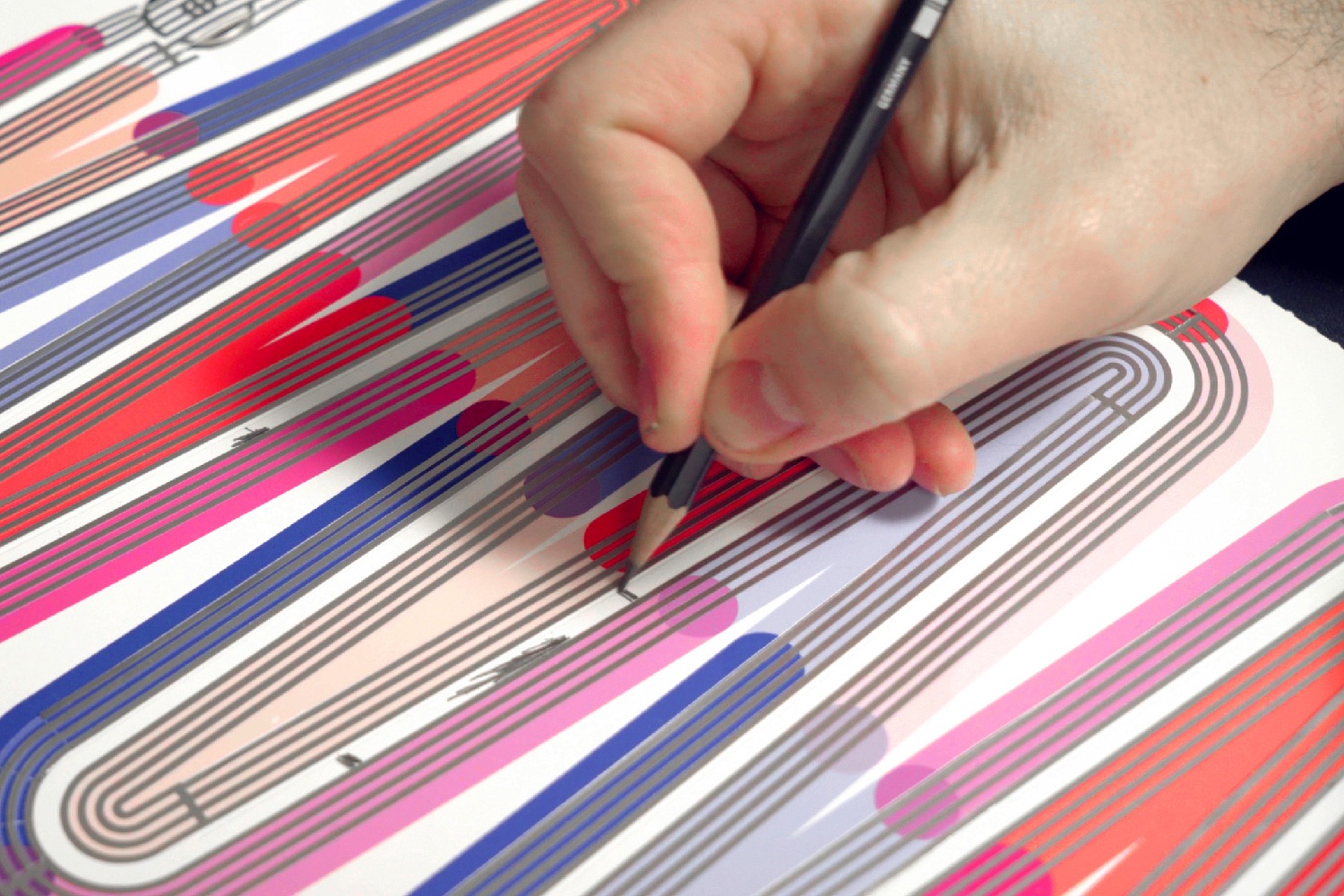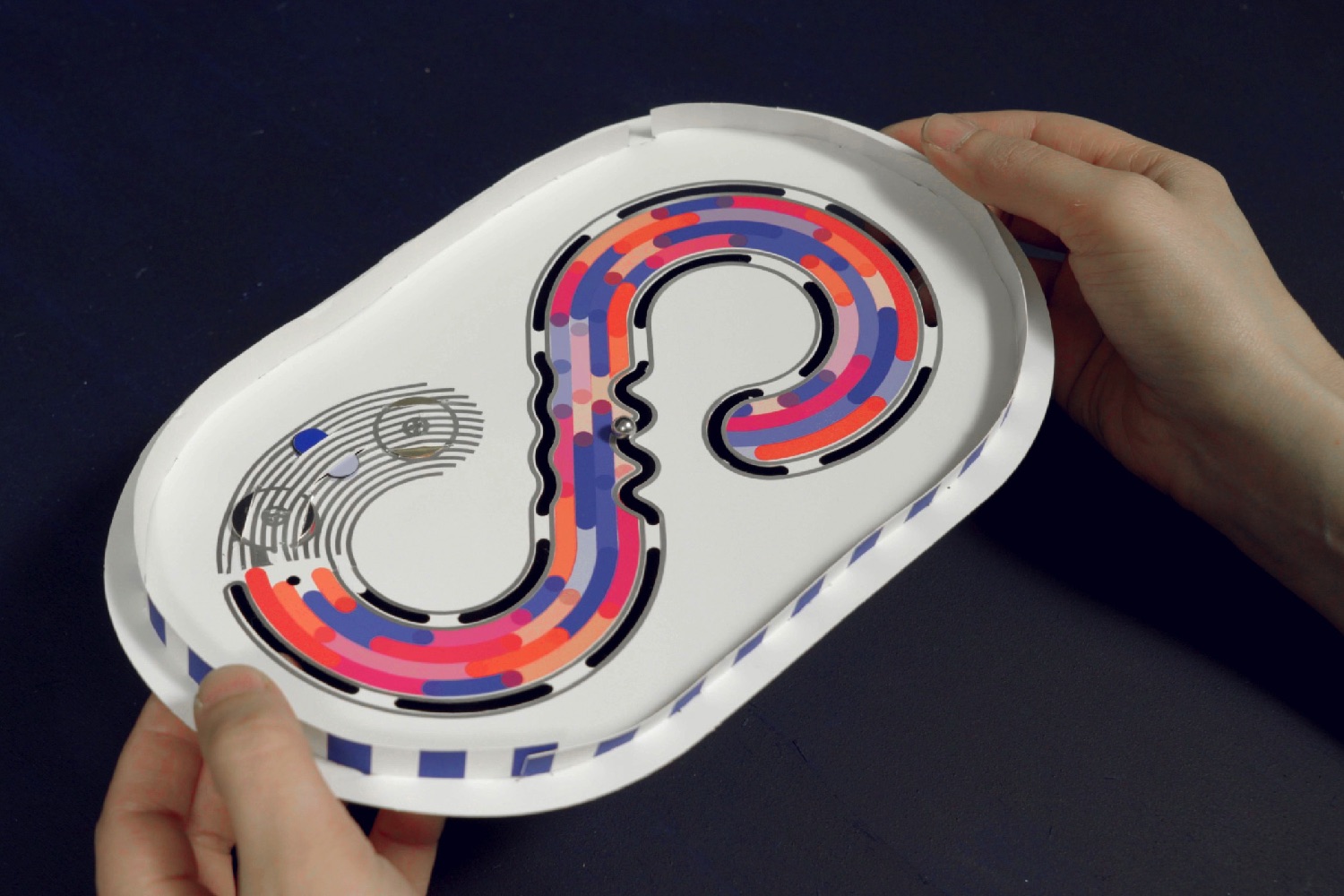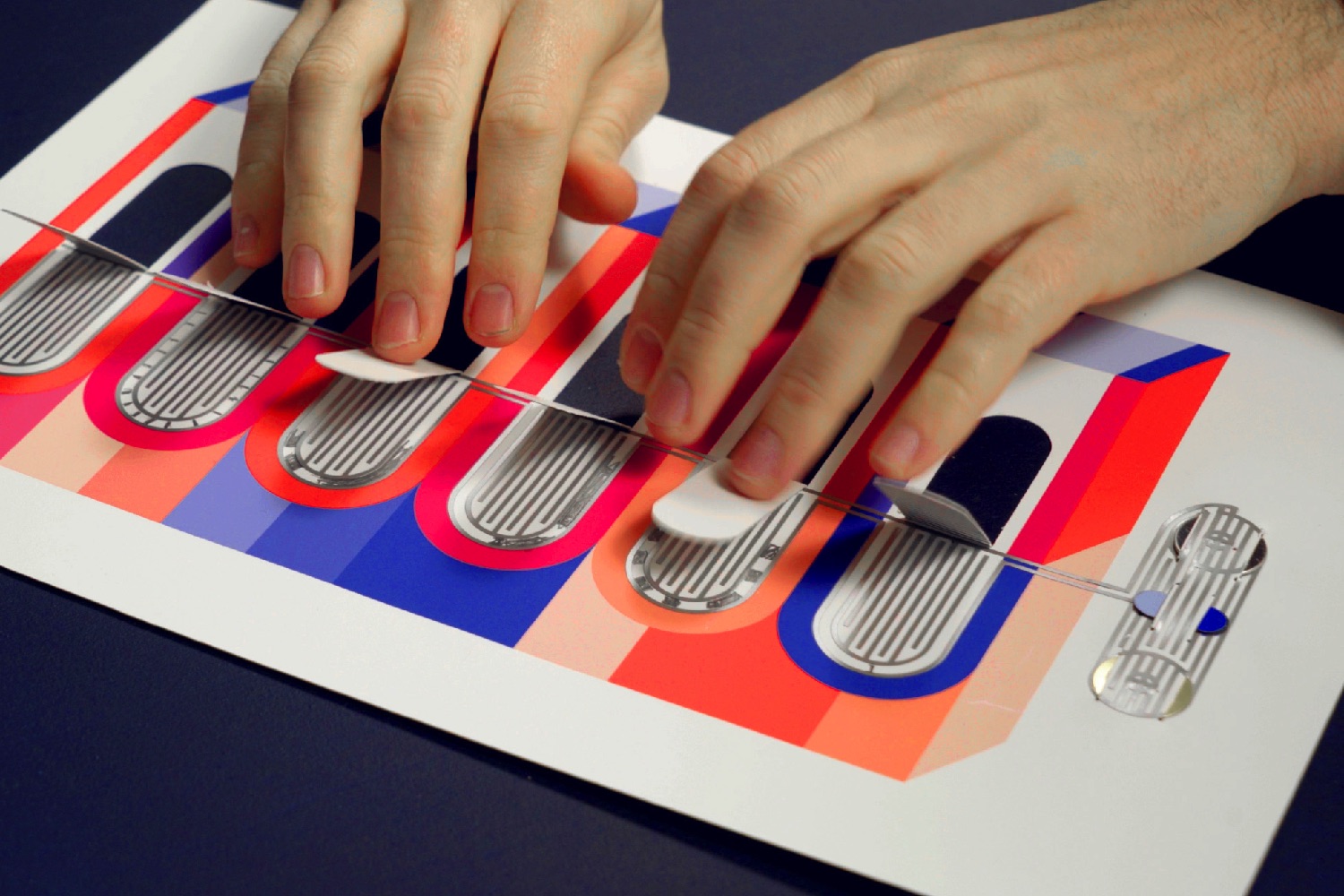Like an interactive scratch-and-sniff book for the Snapchat generation, what makes Papier Machine so neat is that it doesn’t just tell you about how different electronics projects work — it shows you. The book essentially comprises a series of different electronics kits, which the user completes by cutting out pieces, assembling items, coloring in, and more.
“There is no knowledge needed,” Agnes Agullo, one of the project creators, told Digital Trends. “It’s designed for everyone curious. Anyone can interact with paper. Even someone not attracted by electronics can find it interesting. To adults, it should remind you of some old games you played when you were little. To children, it will stimulate curiosity and help [them comprehend] the world without having to touch a screen. To teachers, this should be what you’d use to have your students like electronics.”
One example of the kind of project you can assemble with Papier Machine is a wind sensor, in which a circuit is completed with the aid of wind, breath or some other form of air agitation. Depending on how and where air is blown onto the page, the contact zone evolves and so does the sound. Another involves a music sheet which can be “played” by a rolling metallic marble that completes a circuit and triggers a sound each time it crosses a hand-drawn graphite zone. By coloring in different sections, you can control when the sound is played.
Although we haven’t yet gotten our hands on Papier Machine, it looks brilliant — and just the kind of thing to promote an interest in electronics and circuitry at a time when we’re worried about simply putting our kids in front of a screen to learn.
It can currently be reserved on Kickstarter, where a single Papier Machine book, notebook and poster will set you back 45 euros ($55). Shipping is set to take place in July.







